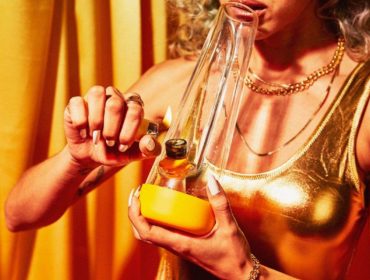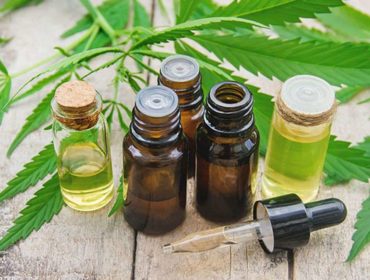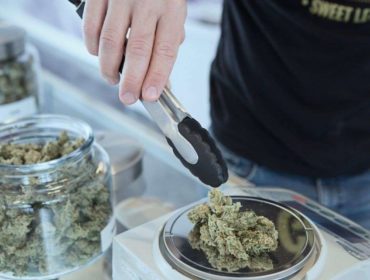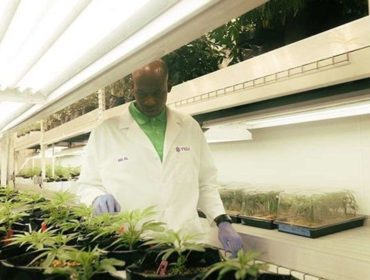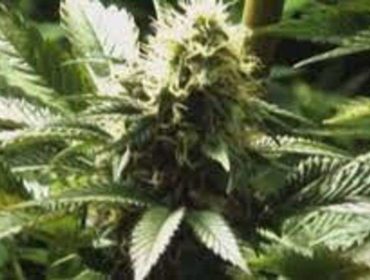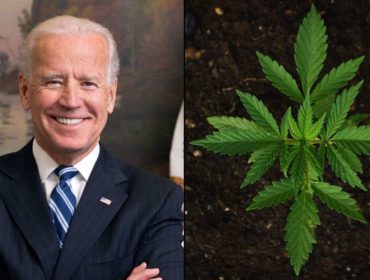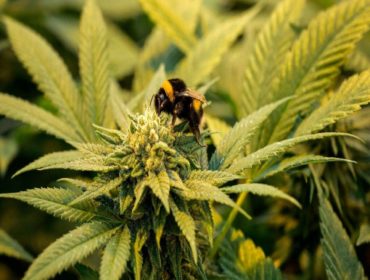Will the rise of a more formal cannabis culture eat into wine’s dominance among future generations?
For decades, cannabis’ edge over wine in coolness was blunted by the fact that it was illegal, unregulated and, by definition, a dead end for young, smart and ambitious career-focused types. For consumers too, the two intoxicants existed in two very separate silos.
While cannabis’ laid-back #vanlife hip-to-the-hop ethos inevitably held more sway in popular culture than wine’s tradition-steeped First Growth this and premier that chatter ever could, the groups of people who aspired to possess either the chronic or the cru come happy hour just didn’t operate in the same spheres. For a long time, the wine industry justly was unfazed by those long-hairs doing their bong hits, even for those who recognized marijuana’s merits.
“I grew up in Mendocino, where cannabis has been grown for decades, and I always had an appreciation for the plant, but I am a law-abider,” says Elizabeth Rice, who worked for decades in the wine industry, most recently as director of operations for Delicato Family Wines in Napa. “To me, while I could appreciate the similarities in the complexity of wine and cannabis, I never even considered a career in the industry because the line between legal and illegal was very black and white for me.”
But those lines are blurred down, as even bastions of uptight aspirational upper-middle-class, weekending-in-the-Hamptons culture like Martha Stewart publicly confess to sparking the occasional blunt with her pals (Snoop Doggy Dog, in her case). The 79-year-old even has her own line of CBD products.
But while cannabis is still illegal on a federal level, it is either completely legal, medical and decriminalized, legal for medical reasons or decriminalized in almost every state. Last year, cannabis registered $17.5 billion in sales, a 46 percent increase from 2019. Major drinks companies like Constellation, have invested $4 billion in the industry, with mixed results.
Could marijuana eventually steal wine’s (already diminishing) market share?
Getting serious about education
For many people in the wine industry, the intense level of study and dedication to the parsing of wine’s history and the understanding of vintage and regional variations, is almost as enjoyable as the act of sipping a glass of wine itself. Very few arenas – save medicine and law, for example – demanded the same rigor to receive the highest distinction available in the world of wine, that of being named a Master Sommelier. Last year, a very similar program emerged for those interested in a serious career in cannabis.
“There’s just as much to understand in the world of cannabis as there is in the world of wine,” says Derek Gilman, a second-generation cannabis cultivator, and a managing director of the Ganjier Cannabis Sommelier Certification Program. “Truly appreciating cannabis and being able to communicate your knowledge to consumers requires a foundational knowledge of the history of its cultivation, its botany, the science and practice of growing it, regional variations, knowledge about its various effects and assessment of its quality through aroma, appearance and flavor. The service element is important too.”
Ergo, Ganjier, the Cannabis Sommelier Certification Program, which bills itself as a rigorous, multi-tiered certification created by and taught by industry legends, including iconic cultivator Swami Chaitanya, cannabis activist Amanda Reiman, hall of fame breeder Mel Frank and cannabis entrepreneur Patrick “The Soil King” King. There are three levels: certified (students learn to assess quality, and business of service and sales), advanced (focused on cultivation, sales and tourism) and executive (equipping students with the knowledge to manage a cannabis business).
Full certification runs about $2997, without the necessary travel and research expenses. Launched in October of 2020, the program sold out in two weeks, with 400 students going through some of the certification, and 63 fully certified ganjiers emerging, Gilman says.
“We had pure enthusiasts enrolled too, but many were current or aspiring C-level execs already running companies, who wanted to deepen their knowledge,” Gilman says. “We also had a lot of cultivators and medical doctors who wanted to learn about the health aspects of cannabis. All told, we had students from 13 different countries in our first year.”
Moving from wine to cannabis?
Some hospitality pros see the Ganjier program as a way to transition out of demanding and thankless industry, into one with as much interest and rigor, but a bit more chill.
“When COVID hit, and I was forced, like so many of my co-workers, to stay home, I realized I didn’t want to go back,” says Au Chung, who worked as lead sommelier at The Hakkasan Group. “I worked in restaurants for more than 20 years, and it takes a lot out of your life. There’s no work-life balance. We work 10-hour days five-six days a week. I missed a lot of great life events to work. And any sense of balance wasn’t prioritized by me or my employers.”
She loved the world of wine, and the manner in which it connects history, agriculture, culture and people, she says.
“I realized I could find all of the things I loved, but get rid of the negatives, if I pursued a career in cannabis hospitality,” Chung explains. When she learned of the Ganjier certification, she says it was a “game changer”.
Post-graduation, she is in the process of building her dream job, which would involve cannabis tourism, perhaps in the Emerald Triangle.
For others, like Rice, who is also a certified Ganjier, she wanted to kick her already successful career in cannabis up a notch.
“I left Delicato in 2020, feeling like I was ready to move on the from the industry,” Rice explains. “I’d sold wine in China, lived in London for years and I didn’t feel like there were any real challenges left for me in that industry.”
She transferred to a similar head of operations in cannabis, for HerbaBuena, and is now director of sales at Curaleaf, managing a team of 24 sales people.
“I really saw the program as an opportunity to deepen my knowledge,” she explains. “And it really did. I have recommended that members of my team pursue it. This industry is growing super-fast, but what it needs is structure and respect. Programs like this will help normalize cannabis, and help it grow in acceptance, which is essential if we want this trajectory to continue.”
Stealing or sharing market share?
Rob McMillan, executive vice president and founder of Silicon Valley Bank, and author of the annual State of the Wine Industry, concurs.
“I think a Ganjer program is a good idea,” he says. “While wine as a business is hundreds of years old with a developed infrastructure, weed is only recently (mostly) legalized. Having people you can depend on for good information about cases, strains, history, supply, regional variability and social protocol should be good for both the consumer sales side, and the consumer side.”
But McMillan also believes that the differences in demographics between the classic wine and weed consumer will remain in place, for a time.
“Bottom line is 13 percent of young people are regular consumers of cannabis,” he notes. “But a far higher component of young consumers are regular alcohol drinkers. Now every young person is a regular cannabis consumer. Many more are regular alcohol consumers. The median cannabis consumer from the dataset I gathered is 26, male and with a degree; blue collar and middle-to-lower income ranges.”
Wine consumers, he continues, skew more evenly between genders, and are college educated, older and with incomes of more than $100,000 per year.
“Can cannabis grow and take away more share from wine over time?” he asks. “Yes, and if it is to do so, it needs Ganjiers in the network.”
Master sommelier Evan Goldstein, who, by the way, has no intention of fleeing wine for cannabis, agrees that cannabis has put on its big boy pants, and may actually prove to be more of an accessory, instead of an alternative, to wine.
“Ganjiers and budtender are becoming accepted and mainstream,” Goldstein says. “There is a clear path emerging for accreditation in this field. I think wine and cannabis can co-exist. Wine is more social and communal, whereas cannabis feels like an individual experience, although you can get high with others. I think cannabis can and will in time own that space between ointments and creams, offer mental, sleep and anxiety benefits with edibles.”
Wine, for all of the talk of antioxidants and heart-boosting resveratrol, has never been touted as a health product. So is it OK to have a glass of First Growth while rubbing THC/CBD ointment onto your aching feet?
No clue. Ask your friendly local Ganjier.
Source: https://www.wine-searcher.com/m/2021/12/dawn-of-the-ganjier-wines-latest-challenge




